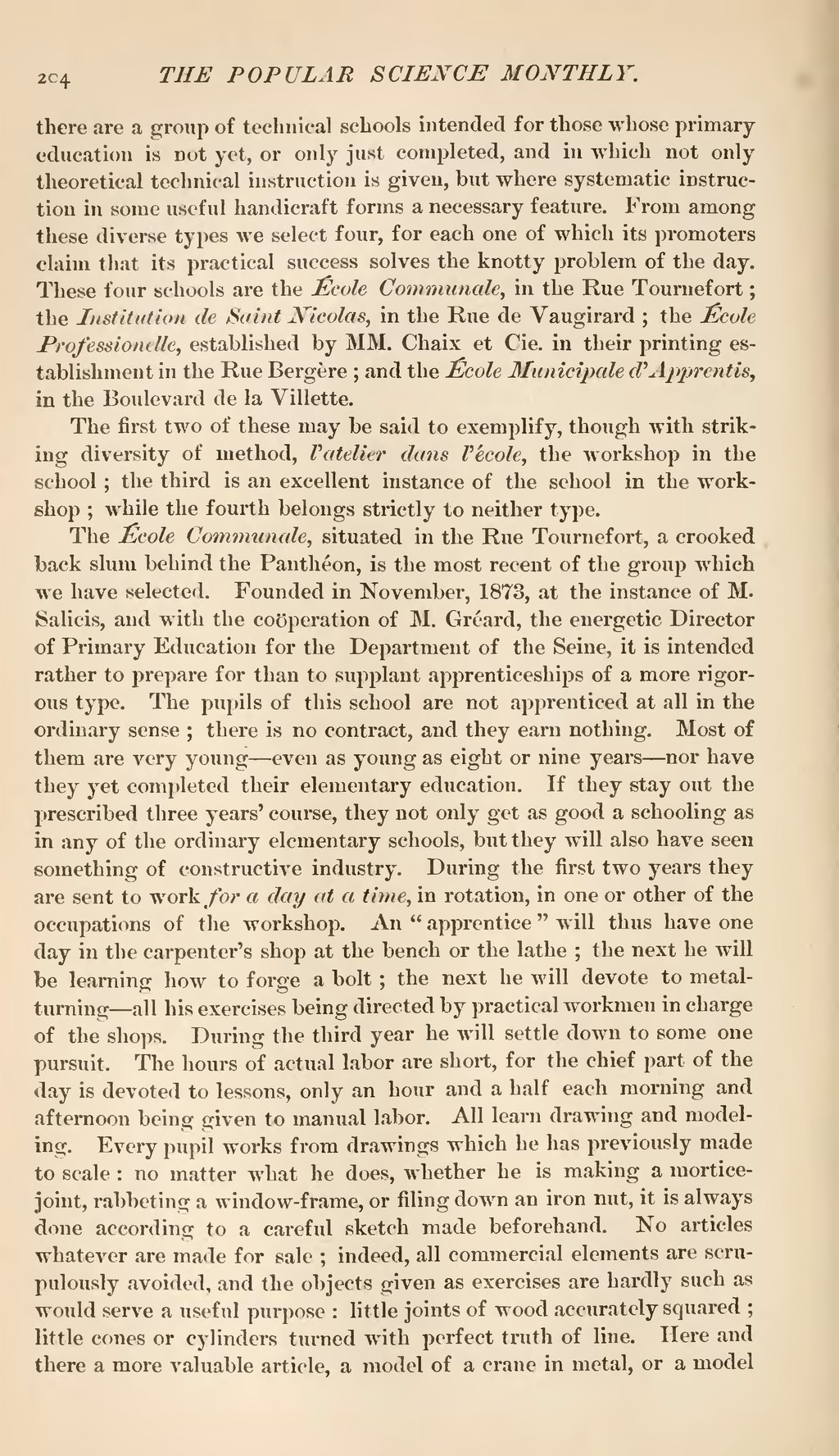there are a group of technical schools intended for those whose primary education is not yet, or only just completed, and in which not only theoretical technical instruction is given, but where systematic instruction in some useful handicraft forms a necessary feature. From among these diverse types we select four, for each one of which its promoters claim that its practical success solves the knotty problem of the day. These four schools are the École Communale, in the Rue Tournefort; the Institution de Saint Nicolas, in the Rue de Vaugirard; the École Professionelle, established by MM. Chaix et Cie. in their printing establishment in the Rue Bergère; and the École Municipale d'Apprentis, in the Boulevard de la Villette.
The first two of these may be said to exemplify, though with striking diversity of method, l'atelier dans l'ecole, the workshop in the school; the third is an excellent instance of the school in the workshop; while the fourth belongs strictly to neither type.
The École Communale, situated in the Rue Tournefort, a crooked back slum behind the Panthéon, is the most recent of the group which we have selected. Founded in November, 1873, at the instance of M. Salicis, and with the coöperation of M. Gréard, the energetic Director of Primary Education for the Department of the Seine, it is intended rather to prepare for than to supplant apprenticeships of a more rigorous type. The pupils of this school are not apprenticed at all in the ordinary sense; there is no contract, and they earn nothing. Most of them are very young—even as young as eight or nine years—nor have they yet completed their elementary education. If they stay out the prescribed three years' course, they not only get as good a schooling as in any of the ordinary elementary schools, but they will also have seen something of constructive industry. During the first two years they are sent to work for a day at a time, in rotation, in one or other of the occupations of the workshop. An "apprentice" will thus have one day in the carpenter's shop at the bench or the lathe; the next he will be learning how to forge a bolt; the next he will devote to metal turning—all his exercises being directed by practical workmen in charge of the shops. During the third year he will settle down to some one pursuit. The hours of actual labor are short, for the chief part of the day is devoted to lessons, only an hour and a half each morning and afternoon being given to manual labor. All learn drawing and modeling. Every pupil works from drawings which he has previously made to scale: no matter what he does, whether he is making a mortice-joint, rabbeting a window-frame, or filing down an iron nut, it is always done according to a careful sketch made beforehand. No articles whatever are made for sale; indeed, all commercial elements are scrupulously avoided, and the objects given as exercises are hardly such as would serve a useful purpose: little joints of wood accurately squared; little cones or cylinders turned with perfect truth of line. Here and there a more valuable article, a model of a crane in metal, or a model
